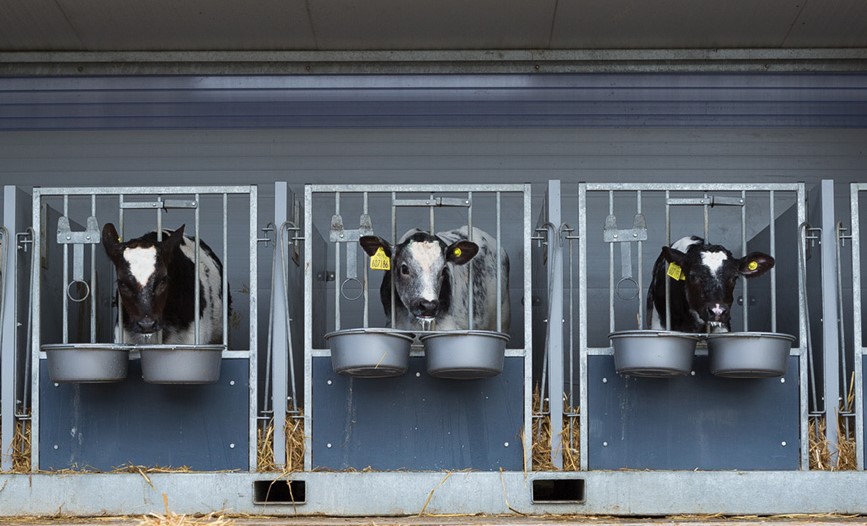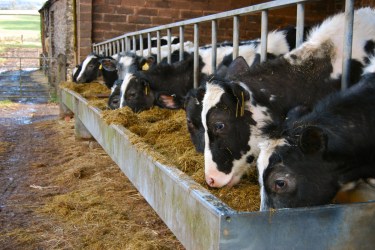By Andrew Suddes
According to data from our Farm Business Accounts (FBA) service, you can improve your bottom line by approximately £14,000, by targeting surplus calves at the beef supply chain.
Over 80% of dairy bull calves are destined for the beef supply chain. The average income per cow is around £60 for each calf sold. However, by implementing some relatively simple changes to the breeding policy, and ensuring that best practice is followed, there is a huge potential to improve this figure.
Our data shows that dairy farms producing calves using top beef genetics are achieving an additional £200 per calf when compared to the value of a typical Holstein bull calf. This is a significant figure and equivalent to an additional 0.73p/ litre for the ‘average’ producer.
In light of this, I have provided key steps to improve the quality and value of your calves, while helping to reduce waste within the beef industry.
Breeding policy
The first step to success is a solid breeding policy for the dairy herd to
ensure you have the right number of replacements for the future.
The use of sexed semen technology on maiden heifers, and the highest genetic potential cows, is critical to this approach.
Once you’re confident that you have all the followers you need, you can focus your attention on maximising income from beef calves by using higher quality beef genetics on the remainder of the herd.
Significant gains have been made in beef genetics, and there is now potential to select for traits such as calving ease, as well as carcass quality and the days to slaughter.
Speak to your end-user to understand what they desire. You can then factor this into your breeding policy to help develop a robust strategy that enables maximum financial gains to be made. Although the cost of good beef genetics may be slightly higher, it’s a win-win situation for both the producer and finisher. The value of the calf will outweigh the initial cost due to the increased growth efficiency and there is often a premium for beef calves sourced from dairy herds using named sires.
Best practice
In addition to ensuring that a beef calf is genetically superior compared to the average calf, there are a number of key areas of best practice that you should follow to increase the overall quality and value of your
calves and encourage long-term relationships.
Colostrum intake in the first few hours of a calf’s life is vital to maximise future growth rates, and calves should receive at least four litres of colostrum within an hour of calving. We often see those heifer replacements get priority to colostrum over any surplus calves.
Although this may seem natural, given these calves are the herd’s future, ensuring that beef calves also get a good supply of colostrum will give them the best start on a beef unit, helping to reduce the days to slaughter, and this can be reflected in the price achieved for calf sales.
A specific vaccination plan for surplus calves bred for the beef supply chain should also be implemented on your farm.
Depending on the age that you’re planning to sell the youngstock, ensuring that they have been correctly vaccinated will be a big advantage for beef finishers, and is likely to increase the value of the calf over and above the cost of vaccination.
Ensuring that calves are vaccinated against key diseases, is critical as it means that the growth rates of the calf won’t be affected by potential disease outbreaks.
Ensuring you consider the future target market of your surplus calves you can not only increase the inherent value but also develop long-lasting relationships with producers that have seen proven results from your stock on-farm.
Top tips for success
- Review your genetic plan – consider the use of sexed semen to breed dairy replacements so that beef genetics can be utilised on the remaining cows
- Analyse your genetics – Don’t choose beef sires based on typical dairy traits alone, also consider beef traits such as 200-day weight based on your target
- Don’t overlook the importance of colostrum – all calves should receive four litres of colostrum within an hour of calving, wherever their destination
- Create a vaccination plan – vaccinating calves destined for the beef supply chain increases their value by reducing the potential impacts of disease outbreaks







